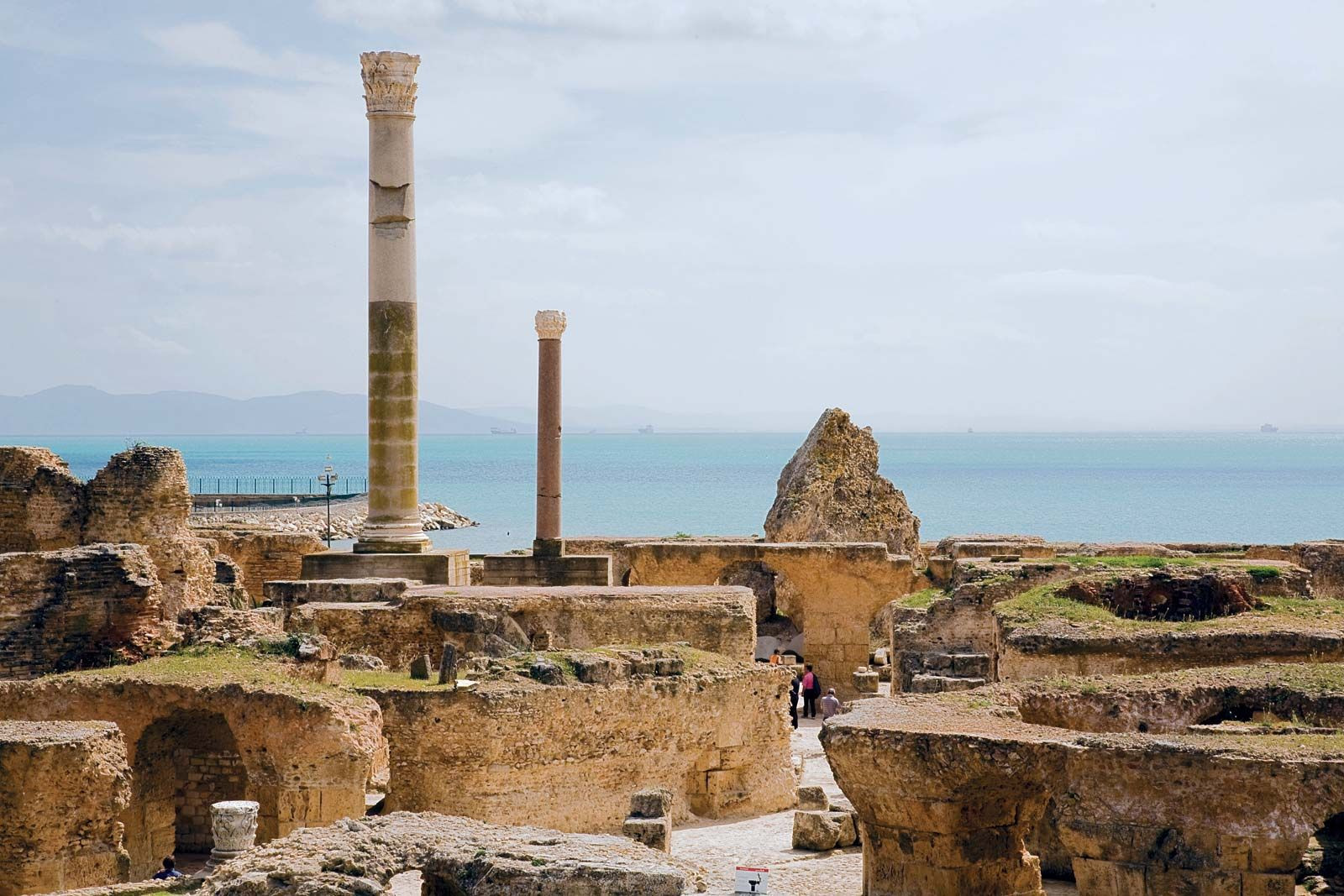Carthage, a name echoing through the annals of ancient history, evokes images of powerful empires, fierce battles, and a civilization that once rivaled Rome. But for those intrigued by this historical giant, a fundamental question arises: Where Is Carthage Located? This ancient metropolis, once a bustling center of Mediterranean trade and power, is not lost to the sands of time, but rather situated in a location that still holds significance today.
To pinpoint where Carthage is located, we must journey to the North African coast, specifically to modern-day Tunisia. Carthage is not a city in ruins isolated in the desert; instead, it exists as an affluent suburb of Tunis, the capital city of Tunisia. Imagine a promontory jutting out into the Tunisian coast – this is where the story of Carthage unfolded. Its strategic placement was no accident; it was meticulously chosen to exert influence and control over maritime traffic navigating between Sicily and North Africa, effectively dominating the central Mediterranean Sea.
The geographical advantage of Carthage’s location is undeniable. Built on a peninsula on the Gulf of Tunis, the city was naturally shielded from harsh Mediterranean storms, offering a safe harbor for ships. The nearby Lake of Tunis further enhanced its appeal, providing secure anchorage and abundant fish resources. This advantageous location provided easy access to the Mediterranean Sea while maintaining a defensible position. The narrow strip of land connecting the peninsula to the mainland further fortified its natural defenses. The ancient citadel, Byrsa, perched on a low hill, served as a commanding viewpoint overlooking the sea, highlighting the strategic brilliance of where Carthage was located.
According to historical accounts, Carthage was founded by the Phoenicians from Tyre around 814 BCE. The Phoenician name for the city even translates to “new town.” While it might not have been the earliest Phoenician settlement in the region, Carthage quickly rose to prominence due to its exceptionally strategic location. Its position was not just about defense; it was about commerce. The Phoenicians, renowned seafarers and traders, meticulously selected locations for their colonies based on harbor quality and proximity to trade routes. Carthage’s location at a strategic bottleneck in east-west Mediterranean trade was a masterstroke, allowing it to flourish as a major port and trading hub.
 Ruins of ancient baths at Carthage, Tunisia
Ruins of ancient baths at Carthage, Tunisia
The story of Carthage is intertwined with its rivalry with Rome. Its advantageous location played a crucial role in its rise as a Mediterranean power, challenging Rome for dominance. From the 3rd to 2nd centuries BCE, Carthage and Rome engaged in the Punic Wars, a series of conflicts that ultimately determined the fate of Carthage. Despite its wealth and military prowess, Carthage was eventually defeated by Rome in 146 BCE, leading to the city’s destruction. The Roman desire to eliminate Carthage stemmed not only from military rivalry but also from the strategic threat posed by Carthage’s location controlling vital Mediterranean trade routes.
 Ancient ruins at Carthage, Tunisia
Ancient ruins at Carthage, Tunisia
However, the story of where Carthage is located doesn’t end with its destruction. The Romans, recognizing the inherent value of its location, rebuilt Carthage. In 122 BCE, a Roman colony was initially attempted, and later, Julius Caesar and Augustus solidified Roman presence there. The new Roman Carthage, known as Colonia Julia Carthago, became a vital center of Roman administration in Africa, rivaling Alexandria and Antioch in importance. Its location ensured its continued prosperity and strategic significance within the Roman Empire.
Even today, visiting where Carthage is located offers a tangible connection to its rich past. While ancient Punic Carthage was destroyed, Roman Carthage left behind substantial ruins that can still be explored. The remnants of fortifications, aqueducts, temples, theaters, baths, and even a circus offer glimpses into the grandeur of Roman Carthage. The Byrsa Hill, once the heart of the ancient city, now houses a 19th-century French cathedral, a testament to the layers of history embedded in this location.
In conclusion, Carthage is located in present-day Tunisia, a suburb of its capital, Tunis. Its strategic position on a promontory of the North African coast, controlling key Mediterranean sea lanes, was fundamental to its historical importance and power. From its Phoenician origins to its Roman resurgence and beyond, Carthage’s location has been a constant factor shaping its destiny and leaving behind a legacy that continues to fascinate and inspire exploration. Visiting Carthage today is not just a geographical journey but a voyage through millennia of history, all anchored to this uniquely significant place on the map.
